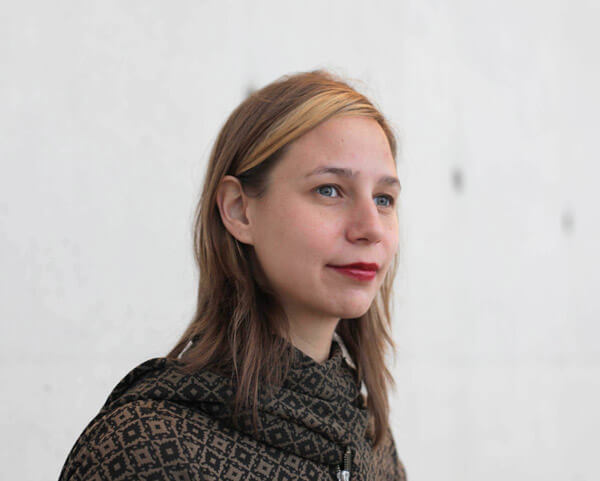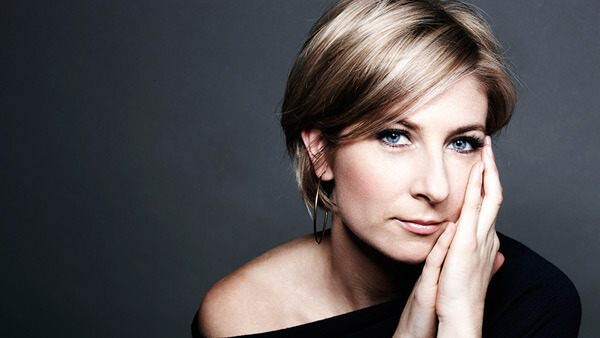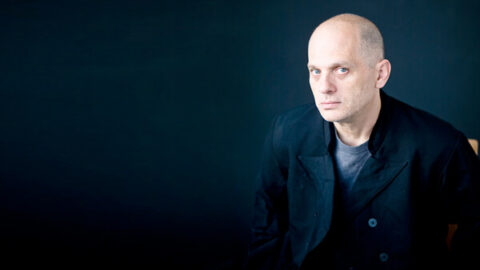 As holder of the 2013-2014 Richard and Barbara Debs Composer’s Chair at Carnegie Hall, David Lang has seen quite a productive season. The preeminent Pulitzer Prize winner credits Carnegie Hall for his having become a composer at all, citing an experience during grade school watching a film of Leonard Bernstein conduct one of his famous Young People’s Concerts during a rainy day recess. That concert, filmed in Carnegie Hall, inspired Lang on the spot to make a career of it. As this season’s resident composer, Lang has engaged in a wide breadth of artistic outreach and mentorship, culminating in the curation of six special concerts entitled collected stories and designed especially for Carnegie’s intimate, subterranean venue, Zankel Hall. The series, which focused on the way music is employed to tell different types of stories, isolated in each of its offerings some common, unifying thread derived from its concept. On Sunday, April 27, 2014, the fifth installment of collected stories, labeled “(post)folk,” showed how traditional source materials, such as folksongs or folktales, can inspire an unpredictable kaleidoscope of musical gestures and listening experiences. New York’s own celebrated ensemble Alarm Will Sound took the stage and presented a diverse program including two world premieres, by pop-jazz guitar virtuoso Kaki King and Australian composer Kate Moore respectively, each commissioned by Carnegie Hall.
As holder of the 2013-2014 Richard and Barbara Debs Composer’s Chair at Carnegie Hall, David Lang has seen quite a productive season. The preeminent Pulitzer Prize winner credits Carnegie Hall for his having become a composer at all, citing an experience during grade school watching a film of Leonard Bernstein conduct one of his famous Young People’s Concerts during a rainy day recess. That concert, filmed in Carnegie Hall, inspired Lang on the spot to make a career of it. As this season’s resident composer, Lang has engaged in a wide breadth of artistic outreach and mentorship, culminating in the curation of six special concerts entitled collected stories and designed especially for Carnegie’s intimate, subterranean venue, Zankel Hall. The series, which focused on the way music is employed to tell different types of stories, isolated in each of its offerings some common, unifying thread derived from its concept. On Sunday, April 27, 2014, the fifth installment of collected stories, labeled “(post)folk,” showed how traditional source materials, such as folksongs or folktales, can inspire an unpredictable kaleidoscope of musical gestures and listening experiences. New York’s own celebrated ensemble Alarm Will Sound took the stage and presented a diverse program including two world premieres, by pop-jazz guitar virtuoso Kaki King and Australian composer Kate Moore respectively, each commissioned by Carnegie Hall.

Kaki King’s Other Education was a three-movement sort of guitar concerto, in which King performed the lead on her signature, custom Ovation steel-string guitar. As King’s first composition of this size and scope, the piece served well as a display case for her abilities and certainly seemed fun to play, but did little to dispel the question as to what purpose the surrounding ensemble served that couldn’t have been accomplished by a smaller, less diverse group. The moderate separation between the ensemble and King’s unique and stylistic playing, essentially left the orchestra in the shadows and begged for a more imaginative way to validate its presence. The atmosphere of the piece invited some divergence from the established groove, such as a solo break for the guitar or moments of illumination for the various chosen instruments, neither of which ever came. Ultimately, King’s harmonic language made for a pleasurable if not two-dimensional listening experience, which managed to align with Lang’s theme of investigating how to eke something unique out of the familiar.
In contrast, Kate Moore’s The Art of Levitation, served as an archetypal example of patient, meditative development in a sort of post-minimalist wash of energetic colors and rhythms. Much of this work was also rooted in the familiar in its expressive use of consonant harmonies and layered rhythmic patterns, which conglomerated into a whole immeasurably more complex than its parts. The piece was a sort of homage to Benjamin Franklin’s musical invention, the Glass Armonica, with which the performer produces crystalline tones by touching a rotating cylinder of wetted glass and became all the rage in 18th century musical circles. Moore utilized the modern kitchen equivalent to Franklin’s contraption with a series of pitched wine glasses glued to a folding table. Alarm Will Sound percussionist Ian Ding got an energetic workout as his piece of Moore’s evocative puzzle evolved from subtle taps on the aforementioned wine glasses to noisy crashes on suspended squares of plate steel and a muffled bass drum.

The piece on this program that most clearly demonstrated a direct connection with the folk music theme was Irish composer Donnacha Dennehey’s Grá agus Bás (Irish for ‘Love and Death’), which infuses a traditional Irish sean-nós singer into an aggressive and bleak landscape of complex rhythmic and harmonic concepts altogether unknown in traditional Irish music and in this combination uniquely alien. Alarm Will Sound was joined by sean-nós superstar Iarla Ó Lionáird, who is known the world over for his unique ambition in stepping outside the often tightly contained box of the traditional folk music community. Sean-nós, which is Irish for “old style” is typically unaccompanied, solo singing characterized by its use of vocal ornamentation. In conflict with this established tradition, Lionáird was embedded in a large instrumental ensemble, standing upon an elevated platform upstage right and wailing expressively into a microphone. Lionáird’s haunting and primal vocal stylizations made for a gripping focal point to this work, like some distant voice echoing off of rain-soaked rocks in a foggy, barren wilderness.
Following the intermission, Dennehey’s otherworldly landscape was well complimented by another perspective on the wildness of the natural world in Richard Ayres monumental and cartoonish piece No. 42 In The Alps. This work, which consumed the entire second half of the concert, was set against a backdrop of silent narration, told through the use of stylized supertitles in the character of those old-timey plaques of dialogue seen in silent movies (complete with scratches on the celluloid and hairs caught in the gate). Ayres’s work was certainly the crown-jewel of the evening, drawing upon fabricated folk elements and archetypes to paint a picture that illustrates how incredibly vast and diverse our natural world really is, in the guise of a folktale. The story follows a young girl, orphaned by a plane crash on the summit of a dangerous Alpine peak who is subsequently raised by friendly woodland creatures and the fatal quest of a young man from the valley who attempts to find her after hearing her singing. Of special note were soprano Kiera Duffy as the young girl (filling in for slated soprano Jennifer Zetlan, who cancelled due to illness) and Alarm Will Sound’s own trumpeter Jason Price, representing the young man, Bobli, who speaks with his trumpet and, for some reason, wears an occupied bird’s nest for a hat.

For an evening out, this concert was one to remember and offered a gradient of styles and inspired material that cut right to heart of Lang’s thoughtful curation. Alarm Will Sound performed beautifully and remained aligned with their mission of championing music in a wide variety of styles and aesthetics. While the roots of these works seemed embedded in what we commonly think of as the material of the past, when shone through the lens of so many imaginative minds these contemporary folktales not only illustrate the material of who we are, but make it exciting to consider whom we may yet have the potential to become.
























